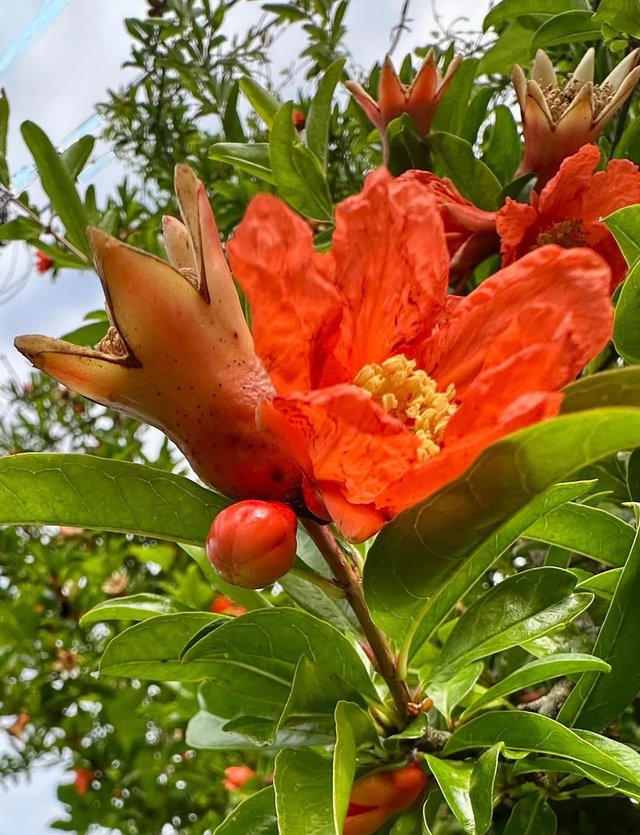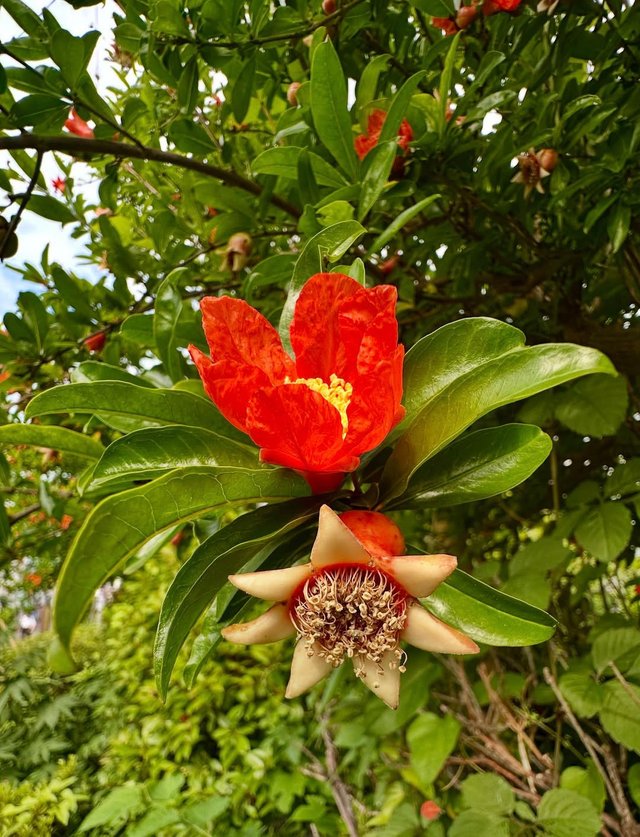Punica granatum Flower
The Punica granatum, commonly known as the pomegranate, is globally recognized for its jewel-like fruits, but its flowers are equally mesmerizing and rich in botanical, cultural, and ecological significance. These radiant blooms are not just ornamental treasures; they are a critical phase in the life cycle of one of the world’s oldest cultivated fruit-bearing plants.The Punica granatum flower is a tubular, bell-shaped blossom that typically appears in late spring to early summer. It emerges either singly or in clusters at the tips of branches. The flowers are usually vibrant red or orange-red, though some varieties may display white or pink hues.
Each flower is about 3–4 cm in diameter and is composed of:Five to seven crinkled petals, with a delicate texture resembling tissue paper.A fleshy calyx, which persists and hardens into the crown of the developing fruitNumerous stamens with golden anthers, giving the flower a sunburst-like appearanceThe calyx is perhaps the most distinctive part—it starts as a deep red or orange tube with pointed lobes, and later transforms into the tough, leathery crown of the pomegranate fruit.
Punica granatum flowers are entomophilous, meaning they rely primarily on insects for pollination—especially bees. The bright colors, rich nectar, and abundant pollen attract a wide range of pollinators. In some regions, hummingbirds and wind may also aid in pollination.Pollination leads to fruit formation, which takes several months to mature. The flower’s structure is uniquely adapted to support this transition from blossom to complex, many-seeded fruit.




